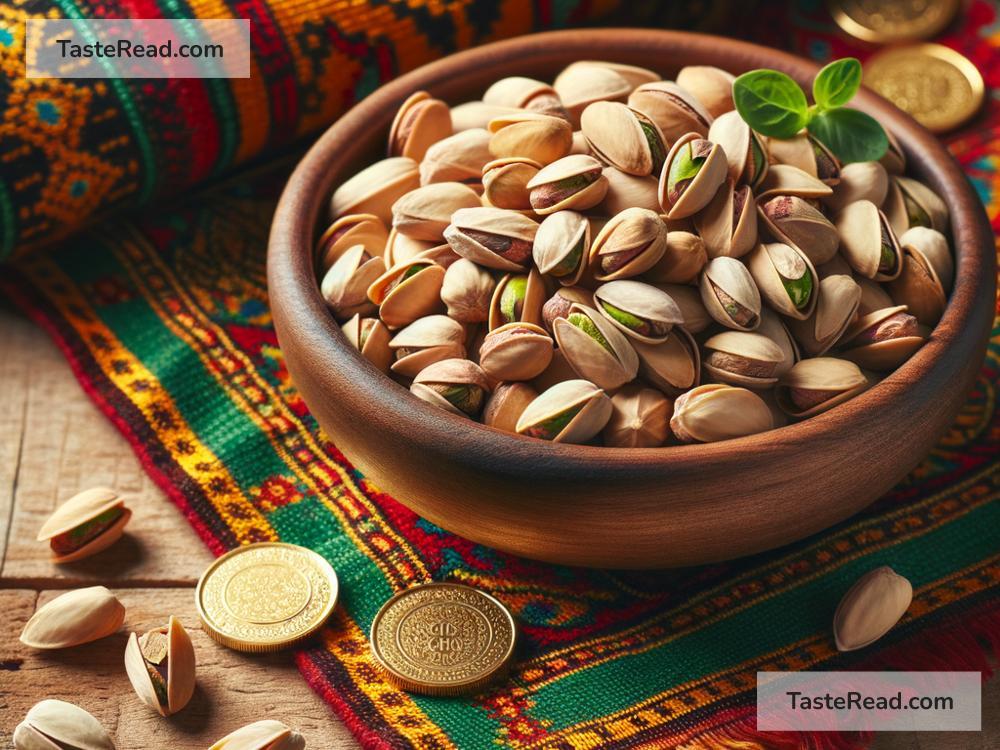How Pistachios Became Symbols of Prosperity
Pistachios are small nuts with a big reputation. Known for their delicious taste and health benefits, these tiny green treasures are loved by people all over the world. But pistachios are more than just a snack—they have also taken on a deeper meaning and become symbols of prosperity. How did a simple nut become associated with wealth, abundance, and success? Let’s dive into their fascinating journey and uncover the story behind pistachios as a symbol of prosperity.
A Precious Gift in Ancient Times
Pistachios have a long history that dates back thousands of years. They are native to the Middle East and Central Asia, specifically countries like Iran, Syria, and Afghanistan. Historians believe pistachios were first cultivated around 7,000 years ago! Back then, pistachios were considered a rare and special treat. Because they were not grown everywhere, they were highly valued.
In ancient Persia (modern-day Iran), pistachios were known as “green gold.” They were seen as luxurious gifts to give to kings and nobility. These nuts were not only loved for their rich flavor but also treasured for their vibrant green color, which symbolized life, growth, and renewal. Offering pistachios as a gift was considered a way to show respect and wish prosperity upon others.
A Favorite of Royalty
Pistachios didn’t stay limited to one region—they soon spread to other parts of the world. Around 2,000 years ago, pistachios traveled westward to Greece and Rome. In these ancient civilizations, pistachios continued to be seen as luxurious. They were served at royal banquets and reserved for the elite. Roman emperors, for example, enjoyed pistachios as a special delicacy.
Legendary figures like Queen Cleopatra of Egypt were also said to have adored pistachios. According to stories, Cleopatra would offer pistachios to guests as a sign of wealth and hospitality. During this time, pistachios gained even more status as symbols of affluence, aligning themselves with the powerful and wealthy.
Connection to Agriculture and Abundance
Pistachio trees are fascinating and unique. They grow in regions with hot, dry climates, and it takes years for a tree to mature enough to produce nuts. However, once the tree starts bearing pistachios, it can continue to produce them for decades—even centuries! This durability made pistachio trees an important part of agricultural prosperity for farmers in ancient times.
For farming communities, growing pistachios was seen as a wise investment. A healthy pistachio orchard signified stability, long-term wealth, and fruitful seasons ahead. Pistachios came to represent abundance not only because of their value but also because of their ability to sustain families by providing a reliable source of income for generations.
A Green Constant in Cultural Traditions
Over time, pistachios became deeply rooted in cultural traditions in several countries. In Iran, for example, pistachios are an essential part of Nowruz, the Persian New Year celebration. Families place pistachios and other nuts on their festive spread to symbolize good luck and prosperity for the coming year. Similarly, in Indian culture, pistachios are included in sweets and desserts during weddings and other joyful occasions, representing plenty and happiness.
In the Middle East, pistachios often appear in signature dishes, such as baklava and Turkish delight, adding richness to the food. Sharing pistachio-based treats during celebrations signals generosity and the hope for continued blessings. Through these traditions, pistachios have come to represent more than just wealth—they symbolize goodwill, community, and shared success.
Global Recognition Today
Fast-forward to modern times, and pistachios are still associated with prosperity. They remain one of the most expensive nuts to grow and harvest, which adds to their luxurious reputation. However, thanks to advancements in farming and transportation, pistachios are now available worldwide, making them accessible to a wider audience.
Pistachios are often packaged as high-end snacks, gift items, or ingredients for gourmet dishes. Many global food brands market pistachios in sleek, elegant packaging, further reinforcing their image as symbols of wealth and quality. At the same time, their vibrant green color continues to remind us of growth, renewal, and the hope for a bright future.
The Health Factor
In addition to their cultural and historical significance, pistachios have gained fame for their health benefits. They are packed with nutrients like protein, fiber, vitamins, and healthy fats. Because pistachios promote good health, they have become associated with a different kind of prosperity—the prosperity of well-being.
Many people now invest in pistachios as part of their healthy lifestyle, seeing them not just as indulgent snacks but also as keys to better physical and mental health. In this way, pistachios continue to embody the idea of abundance and thriving, both physically and financially.
Final Thoughts
From ancient kings and queens to modern snack enthusiasts, pistachios have always stood out as something special. Their rich history, cultural significance, and nutritious qualities have helped them earn their place as symbols of prosperity. Whether they’re given as gifts, shared during celebrations, or enjoyed as part of a healthy lifestyle, pistachios continue to remind us of wealth, abundance, and plenty.
So next time you crack open a pistachio, take a moment to appreciate its journey. This humble nut carries a powerful message: prosperity isn’t just about material wealth—it’s also about sharing, celebrating life, and staying healthy. And pistachios remind us that the best things often come in small packages!


